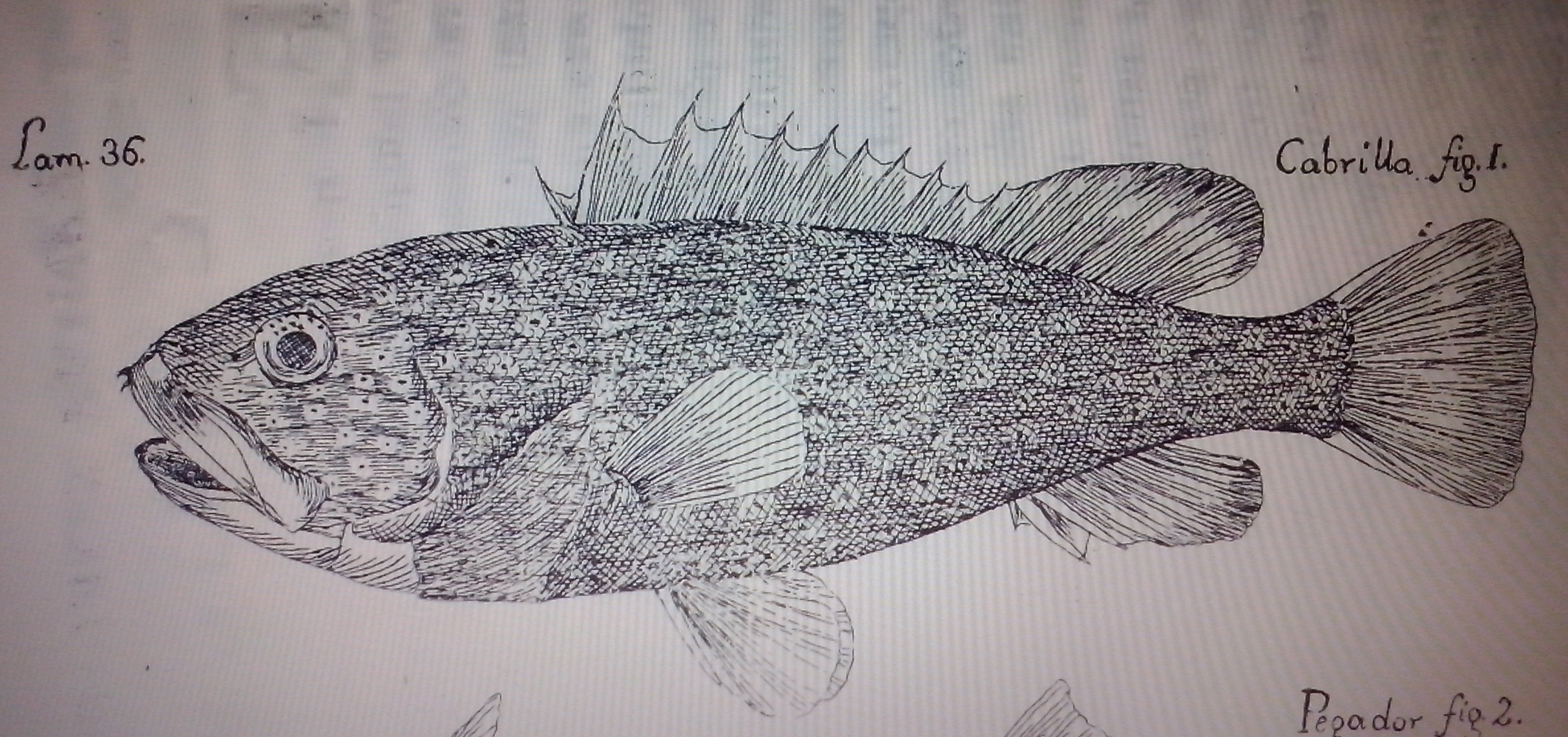History of ciguatera
The oldest known description of ciguatera belongs to the portuguese naturalist Antonio Parra Callado in 1787, from his work “Descripción de las diferentes piezas de Historia Natural, las más del ramo marítimo, representadas en setenta y cinco láminas”. After describing many fishes from Cuba some of which he referred as likely poisonous, Parra reported into detail the siguatèra (sic) syndrome, based on his own experience after being intoxicated with a “cubera” (Lutjanus cyanopterus; fishbase).
That fish could be probably the one named “cabrilla” in plate XXXVI from Parra’s work (upper illustration)
He stated that the illness is thought to be caused by fishes that ingested fruits of the manchineel tree (Hippomane mancinella), a toxic member from the Euphorbiacean family, very common on the sea shores of Florida and Colombia. However, Parra himself hardly believes this story, given that manchineel trees are much abundant also in the countryside.
After some years it was published “El viagero universal ó noticia del mundo antiguo y nuevo”, a series of reviews and translations from other authors, mainly from Joseph de La Porte and written by Pedro Estala. The whole contents can be consulted at digital library Hathi Trust. Volume XX, from 1798, is dedicated to Cuba and in pages 91 and 92 is described the term ciguatera in similar terms, probably taken from Antonio Parra’s work.
In these ancient descriptions it is cited already cited that ciguatera is produced by fish that became toxic through their diet. The oldest reference of ciguatera is attributed to the ingestion of a snail called “cigua” (Cittarium pica) by Felipe Poey, on “Ciguatera; report on the disease caused by poisonous fish“, published in his Physical–Natural report of the island of Cuba in 1866-1868. Nevertheless, he himself says: “I believe this is the most likely interpretation, but not conclusive”. This definition is the one that was later popularized by John E. Randall in a review of ciguatera published in 1958.



